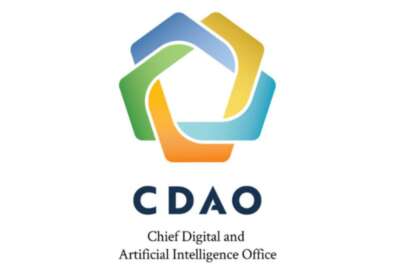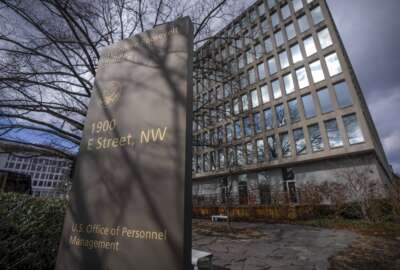Digital Transformation in Government Segment
For agency heads, chief information officers, chief information security officers to have applications that run fast and stay secure, they really need to know what’s going on, on their network. That’s gotten way more complex too.
Dennis Reilly
Vice President, Public Sector, Gigamon
If you can have a good network detection and response system that helps security operations centers prioritize the most serious and potentially most damaging alerts to investigate first, that’s a tremendous force multiplier for them. It can also get over the well-known alert fatigue and it’s been a big help for threat hunters and threat analysts.
Dennis Reilly
Vice President, Public Sector, Gigamon
There’s nothing like a little emergency to shock the system. The coronavirus pandemic helped remind agencies of two things. First, how much progress they can make in a short amount of time when there is urgency.
Second, and maybe more importantly, the pandemic reinforced why IT modernization is so important. Agencies which invested in the cloud and other modern technology tools and infrastructure were in better shape than those which didn’t.
Take the Small Business Administration as just one example. SBA created a new loan processing application in the cloud for the Paycheck Protection Program and the Economic Injury Disaster Loan (EIDL) programs in five days.
Or the National Science Foundation, which quickly implemented and trained employees on using a secure video teleconferencing system.
Or the Veterans Affairs Department, despite their size and challenges, dramatically expanded tele health services during the pandemic. VA conducted about 2,500 telehealth video sessions daily at the beginning of March. Today, VA is conducting nearly 25,000 sessions — a 1000% increase.
None of this was possible without investments in technology infrastructure and cybersecurity tools.
While the pandemic showed what was possible, agencies are far from modernized. There still are too many legacy systems that put services to citizens at risk.
Dennis Reilly, the vice president of public sector at Gigamon, said agencies can use the pandemic emergency to continue to make progress.
He said in the private sector, digital transformation was a survival issue. Either companies transformed or went out of business. While agencies aren’t going anywhere, citizens have the same expectations around services and security as they do with the private sector and those agencies that struggled face a lot more scrutiny.
“For agency heads, chief information officers, chief information security officers to have applications that run fast and stay secure, they really need to know what’s going on, on their network. That’s gotten way more complex too. It used to be two-tier architectures or three-tier architectures. Now, you may have a 15-tier architecture with micro-services and all kinds of hand held devices,” said Reilly on the Innovation in Government show sponsored by Carahsoft. “We know the volumes going across the network are exploding and user expectations are really high. If you have a performance bottleneck, you need know what’s going on your network so you can detect it and correct it quickly, and the data needs to stay secure or otherwise people will lose confidence in that application and just not use it.”
He said agencies need visibility of all the data in transit, on premise or in the cloud so leaders can determine where their might be problems and fix or secure the information.
The VA is a good example of an agency that has taken advantage of the digital transformation to respond to the remote working and telehealth surges.
Reilly said, on the other hand, one of Gigamon’s Defense Department customers had to upgrade their virtual private network to handle the telework surge. But as they beefed up their network, they needed help in monitoring for performance and security.
“It really became a continuity of operations issue for the agency, not really a technology challenge,” he said. “Agencies have gone a long way in beefing up their infrastructures in what was largely an unforeseen event. There is still more work to do, but a lot of good work has been done.”
Reilly said the fact so many agencies are taking advantage of the cloud is one of the reasons why they were able to move faster than usual during the pandemic.
“We are seeing more and more agencies wanting visibility into a multi-cloud environment,” he said. “They want to make sure no matter where they put their workloads, they can monitor those workloads for both performance and security.”
While speed and agility are important facets of digital transformation, so is security. And as employees work from home, the threat surfaces expands beyond the typical network.
“Having visibility on-premise, the virtual environment and the cloud becomes really important because if you don’t know what’s going on, an adversary is staging data for exfiltration, you can’t stop it,” Reilly said. “It used to be outside the firewall is considered untrusted and inside the firewall is considered trusted. That hard shell perimeter has gone away. You treat with suspicion any user and any device and make them authenticate themselves frequently.”
What Reilly is talking about is the move to a zero trust environment. He said without visibility into the network, agencies can’t implement this approach.
He also said agencies should be wary of any advice that says they need to encrypt 90% of all network traffic. He said agencies should rely on break and inspect, and re-encrypt approach to cybersecurity.
“If you can have a good network detection and response system that helps security operations centers prioritize the most serious and potentially most damaging alerts to investigate first, that’s a tremendous force multiplier for them,” Reilly said. “It can also get over the well-known alert fatigue and it’s been a big help for threat hunters and threat analysts.”
 About Gigamon
About Gigamon
Gigamon is the first company to deliver unified network visibility and analytics on all information-in-transit, from raw packets to apps, across physical, virtual and cloud infrastructure. We aggregate, transform and analyze network traffic to solve for critical performance and security needs, including rapid threat detection and response, freeing your organization to drive digital innovation. Gigamon has been awarded over 75 technology patents and enjoys industry-leading customer satisfaction with more than 3,000 organizations, including over 80 percent of the Fortune 100 and leading government agencies and educational institutions. Headquartered in Silicon Valley, Gigamon operates globally. For the full story on how Gigamon can help you to run fast, stay secure and innovate, please visit www.gigamon.com
Copyright
© 2024 Federal News Network. All rights reserved. This website is not intended for users located within the European Economic Area.









